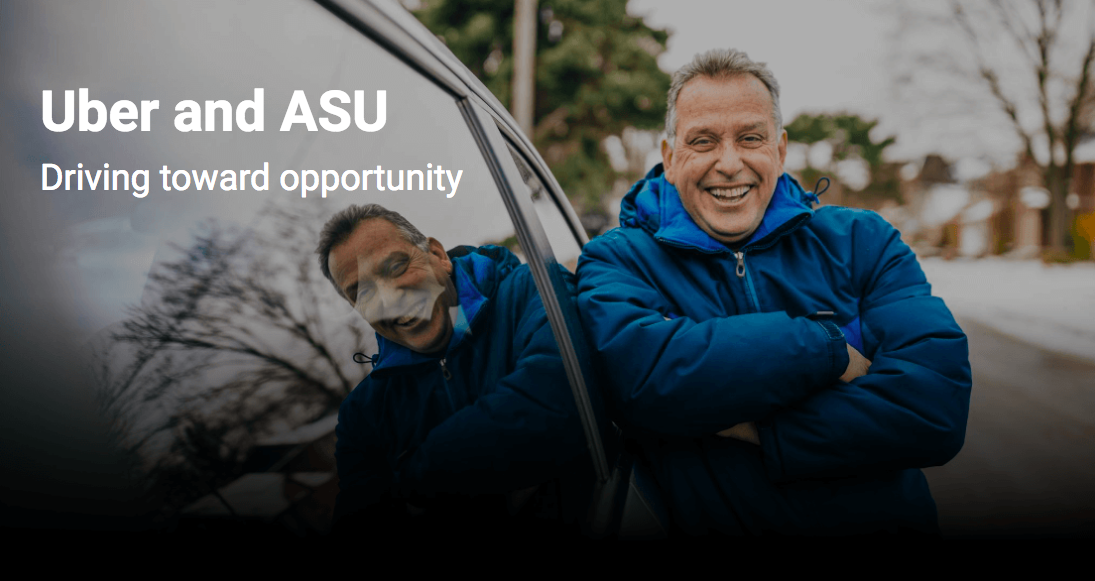
News & Resources
Why Uber drivers can take ASU online classes at no cost to them

Uber CEO Dara Krosrowshahi and ASU President Michael Crow explain why they have partnered to help make higher education more accessible to more learners.
Editor's note: Arizona State University and Uber announced a partnership Nov. 1 to offer ASU online courses at no cost to eligible Uber drivers.
There was a time when the idea of hailing a ride with your phone or earning a degree from your computer sounded like the stuff of sci-fi novels.
Clearly, times have changed.
How we live, how we learn, how we work: It seems that almost every facet of our daily lives has been dramatically reshaped by advances in technology.
On balance, this has been for the better. Living standards are up. Literacy rates have never been higher. The world feels more connected than ever.
But for all the progress technology has brought, many still find it hard to get ahead. The data bears this out. As one study recently found, rates of intergenerational mobility have remained flat in the U.S. for decades.
Most jobs require more than high school
The challenge for today’s leaders in academia, business and government is to ensure the benefits of technological progress are felt by all. One critical place to make that happen is education.
There is broad agreement that educational attainment is the single strongest predictor of social mobility. Higher skills are in increasingly high demand. In the 1970s, fewer than 30 percent of jobs in the U.S. required more than a high school diploma. Today it’s more than 60 percent. By 2020, two out of every three jobs will require some kind of post-high school certificate.
Yet for many, a higher education is out of reach. Cost is a major barrier. So is family background for too many students who question their own potential. Flexibility is an obstacle — or, put more accurately, the lack of it.
This is where Uber and ASU are determined to help.
Flexibility is foundational to our two enterprises. For Uber, this means being able to earn in ways that fit your schedule. For ASU, this means being able to learn in ways that fit your life. We believe there is an opportunity to bring the power of our platforms together to expand access to flexible work and flexible education, and opportunities that come with both.
What we're offering to Uber drivers
Starting this month, we are partnering to connect eligible drivers to a high-quality, fully funded education through ASU online. Through this education partnership, people who drive with Uber can complete courses toward a degree or pursue non-degree certificate entrepreneurship or English as a Second Language courses via ASU’s Continuing and Professional Education Program.
Drivers will also have the option to transfer this opportunity to their spouse, domestic partner, child, sibling, parent, legal guardian or dependent. The cost of tuition, be it for drivers or a member of their family, will be 100 percent covered.
Our partnership will start as a pilot available to drivers in eight U.S. cities, including Phoenix. In the near term, we plan to use this time to listen, learn and refine the program before rolling it out more broadly.
But even as we fine-tune our partnership, we are clear about our shared mission. In the years ahead, we hope to provide a model of how business and academia can leverage knowledge, technology and scale to help more people gain the skills they need to advance, serve their families and communities and contribute to the betterment of society.
Nobody knows what tomorrow holds. What we do know is that advances in technology will require us to think creatively and collectively about how we prepare people when tomorrow comes.
Yes, the world is changing fast. But working together, we can deliver a more inclusive future where everyone has the chance to get ahead.